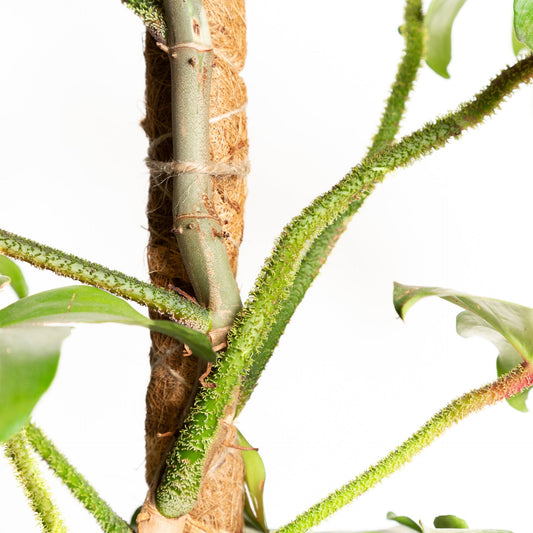We like to imagine there is some idyllic alternative universe where cotton candy doesn't give you cavities and all you need to do to keep your plant looking luscious is water it regularly and give it enough light.
Unfortunately, in THIS reality you'll encounter some leaf discoloration even if you are the most diligent plant caretaker imaginable.
However, a basic understanding of what brown leaves on houseplants indicate can help you quickly address the underlying cause before lasting harm is done.
In this blog we’ll go over some of the signs of common house plant problems and what to do to resolve them.
Identifying discolored houseplant leaves as the result of root stress
Yellow leaves near the base of your houseplant
The placement and texture of browning on your plant can give you a general idea of the underlying problem. If your plant has yellow or dried leave near the base of the plant it either needs more frequent watering or it’s time for a re-pot.
Even if you water your plant on a schedule, change in environment and season can impact how frequently your plant needs attention. Checking your soil more often can help you figure out if additional watering is required.
If it’s been more than a year since your plant was put in its current pot, it’s roots may need more room to grow. Roots that are too tightly packed into a pot decrease your plants access to oxygen through the soil, resulting in leaf discoloration.
If you decide to re-pot at home, make sure you understand your plants root sensitivity. Some plants will go into shock with even gentle root handling. If you’d like expert support for your re-pot you can drop it off in the store or book a virtual consultation for remote help.
brown leaf edges
In most cases this kind of discoloration is related to a lack of moisture either in the soil or in the air. We already touched on how to double check that your plant is getting it’s watering needs met, so let’s talk about easy ways to increase humidity. One easy method is to fill a tray or saucer with pebbles and add some water. As the water evaporates it increases the humidity in the air around it.
If that sounds like too much planning for you, you might prefer to use a micro-mister bottle to spray near your plants a few times a week.
Another easy method is to group your plants together. Plants emit water through a process called transpiration. When they are grouped together, this combined water emission can help maintain a stable level of humidity.
Bruise-y or Translucent Leaves
Bruisy coloring or translucent leaves often indicate a lack of oxygen to the roots, often as the result of too much or too little moisture. This kind of coloring can indicate serious issues, especially if it’s accompanied by a kind of musty smell.
Seasonal and environmental changes can also lead to your plant needing more or less water than it did previously. This can lead to unintentional overwatering which can ultimately cause root decay.
Jen goes into how to interpret this discoloration type in this helpful reel.
If you suspect your plant is suffering from root decay, it's best to get some experienced help. Booking a drop off at the clinic or setting up a virtual consultation is highly encouraged.
How to identify Leaf Spot
Leaf spot is a common problem that houseplant lovers face. In it’s early phases it looks like small, brown, papery speckles or brown spots with a yellow ring around it. Read more about Ring Spot here.
Signs of Houseplant Pests
Houseplant pests are a common problem for plant keepers. They can enter your space through open windows, on your clothes or shoes from outside, or even on the leaves of a rescue plant.
Pests are attracted to the signals that plants send out when they are experiencing some kind of environmental stress. The same way that consistently meeting your own body’s rest and nutrition needs can prevent illness, the more your care meets your plants ideal conditions the more resilient it will be to pests.
If you are noticing unusual patterns, discoloration, growths, or residues on your plant it is possible pests are to blame.
Here are some of the most common signs to look out for.
Squiggly discoloration or translucent patches as the result of thrips.
If you’re ever concerned about any unusual coloring or change in your plants growth, feel free to text the store or DM us on Instagram. We’re here to help you and your plant get back on track.
Don’t Feel Down When Leaves Turn Brown
Brown leaves on your houseplant are no reason to panic!
It doesn’t mean you aren’t doing a good job, or even that your plant is on its way out. By taking the time to understand the different reasons your plant’s leaves may change color or texture you are preparing yourself to better understand how your plant communicates. As you get to know your plant, you'll become more sensitive to its changing needs over time which can decrease the occurrence of leaf discoloration.
If you ever need help understanding the signals your plant is sending text the store or reach out to us on Instagram. We're here to help you and your plant get back on track.


